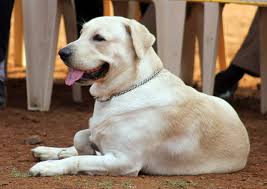YARD.
The most common source of accidental pet poisoning in California is SNAIL BAIT.
HOME
- ONIONS are TOXIC to DOGS and CATS (and horses) – they can cause Anemia.
- Raw sour dough (as in breadmaking) can have enough ethanol for a pet to be poisoned (play dough contains high levels of salt).
Animals, especially puppies, will find any holiday things appealing and tempting to play with or explore. Shock, electrocution, ingesting odd objects, knocking over things to get at something, burns, broken glass, and toxic plants or painted items can wreck havoc on your pet by injuring or killing them and the efforts to save them can be costly both emotionally and financially. Preventing the hazards by taking precautions is the best cure.
INSTRUCTIONS FOR ADMINISTERING CPR TO YOUR DOG
“Artificial breathing is an emergency procedure used to exchange air in the unconscious dog. Heart massage is used when no heartbeat can be hard or felt. When heart massage is combined with artificially breathing, it is called cardiopulmonary resuscitation (CPR). As cessation of breathing is soon followed by heart stoppage and vice versa, cardiopulmonary resuscitation is most often required in the life-threatening situation. CPR can be performed by one person, but it is easier if two people are available. One does the breating and the other does the heart massage. The following emergencies may require artificial breathing or CPR: Shock, Head Injury, Poisoning, Electric Shock, Prolonged Seizure, Obstructed Airways (choking), Coma, Sudden Death.
Determine which basic life-support technique to employ in an unresponsive dog:
- IS THE DOG BREATHING? Observe rise and fall of the chest. Feel for air against your cheek.
- IF YES, pull out tongue, clear airway. Observe.
- IF NO, feel for pulse.
- DOES THE DOG HAVE A PULSE? Feel for the femoral artery located in the groin.
- IF YES, employ Artificial breathing.
- IF NO, employ CPR.
ARTIFICIAL BREATHING (MOUTH-TO-NOSE BREATHING)
- Lay the dog on a flat surface with his right side down.
- Open the mouth and clear secretions. Check for a foreign body. If found, remove. If impossible to reach, execute the Heimlich maneuver.
- Pull the tongue forward and close the mouth. Place your mouth over the dog’s nose. Blow gently into the dog’s nostrils. The chest will expand. Release to let the air come back out. Excess air will escape through the dog’s lips, preventing overinflation of the lungs and overdistension of the stomach.
- If the chest does not rise and fall, blow more forcefully; or if necessary, lightly seal the lips with your hand.
- The breathing rate is one every four to five seconds (12 to 15 per minute).
- Continue until the dog breathes on his own, or as long as the heart beats.
CPR (ARTIFICIAL BREATHING AND HEART MASSAGE)
- Continue with mouth-to-nose breathing.
- Prepare for heart massage. Place the fingers and thumb on either side of the sternum, behind the elbows.
- Compress the chest firmly six times; administer a breath. Then repeat. Massage rate is 80 to 120 compressions per minute.
- If possible, do not stop heart massage while administering a breath.
- Pause every two minutes for 10 to 15 seconds to check for pulse and spontaneous breathing.
- Continue until the heart beats and the dog breathes on his own, or until no heartbeat is felt for 30 minutes.
It would probably be a good idea to find your dog’s sternum, elbows, femoral artery before you need to know them, that way, it will be one less thing to worry about should you ever need CPR.
HIGHLY TOXIC PLANTS
- A few Holly berries – moderate toxicity, causes vomiting, diarrhea and depression.
- Mistletoe (berries) – Get upset, causes irregular heartbeat, vomiting, diarrhea and heart shock.
- Epoxy adhesives.
HOUSE TOXINS
- Onions – cause severe Anemia.
- Snail Bait – number one poison in California.
- Raw sour dough – used to bake bread, contains ethanol.
- Antifreeze – sweet taste, most commonly found on garage floor.
- Garlic and other members of the Lilly family as are: onions, shallots, chives . Any form, raw, cooked, dried. Causes Hemolytic Anemia
- Raw garlic and onions also irritate the mouth and stomach and can cause ulcers.
- Pennies – zinc.
- Mothballs with naphthalene – one to two is life threatening.
- Homemade play dough – contains a large amount of salt.
- One teaspoon of antifreeze kills a 10# dog.
- TIP: Pinesol cleaning products. Alternative to aerosol cleaning products, 1:12 solution(one pint bleach/water) with a little dish soap, cleans well, smells good and is safe.
